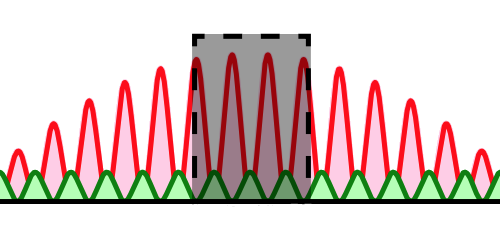Cold Atoms Link a BEC, a Superfluid, and a Supersolid
In 1938, one year after the discovery of superfluidity in helium-4 (4He ), German physicist Fritz London proposed that superfluidity is linked to the congregation of atoms into the same quantum state: a Bose-Einstein condensate (BEC). Scientists now know that the two phenomena are related but not in an obvious way. For example, at low temperature, when liquid 4He becomes superfluid, only 14% of its atoms are in the same quantum state. In fact, most two-dimensional superfluids entirely lack a BEC component. Now Junheng Tao of the University of Maryland and collaborators show that the two phenomena are linked to a third: supersolidity [1]. The finding matches the results of similar experiments announced earlier this year [2].
In their experiments, the researchers loaded a BEC of ultracold rubidium atoms into a trap with a straight, narrow, U-shaped potential in the vertical direction. They then applied a second potential, creating a nearly one-dimensional lattice. Together, the two potentials trapped the BEC so that the atoms were more densely packed in the middle of the system than at the edges.
To find out if the BEC contained a superfluid component, Tao and his colleagues probed the system using a scattering technique that can measure the speed of sound c of a material, a parameter linked to a superfluid’s density. By comparing two perpendicular directions, they found that c—and, by implication, the superfluid density—was anisotropic and was lower than it would be without the lattice, the same behavior announced previously. Both observations match those predicted for supersolids, crystalline materials whose lattice vacancies flow without resistance. It turns out that the density reduction matches a 1970 prediction for supersolids [3].
Correction (19 October 2023): A previous version of the story incorrectly implied that Tao and his colleagues had seen a spontaneous transformation of their superfluid helium-4 system into a supersolid state. Rather, they transformed the superfluid into a supersolid-like state by imprinting the superfluid with density modulations.
–Charles Day
Charles Day is a Senior Editor for Physics Magazine.
References
- J. Tao et al., “Observation of anisotropic superfluid density in an artificial crystal,” Phys. Rev. Lett. 131, 163401 (2023).
- G. Chauveau et al., “Superfluid fraction in an interacting spatially modulated Bose-Einstein condensate,” Phys. Rev. Lett. 130, 226003 (2023).
- A. J. Leggett, “Can a solid be “superfluid”?” Phys. Rev. Lett. 25, 1543 (1970).




